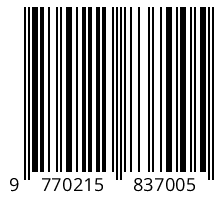PENGEMBANGAN BAHAN PEMBELAJARAN BERBASIS KOMPUTER (PBK) UNTUK MEMFASILITASI ACTIVE LEARNING DALAM MATA KULIAH LANDASAN KEPENDIDIKAN
DOI:
https://doi.org/10.18592/khazanah.v8i2.3025Keywords:
pembelajaran berbasis komputer, strategi active learning, mata kuliah landasan kependidikan, efektif, efisien, daya tarikAbstract
Penelitian ini bertujuan untuk: (1) mengembangkan software PBK mata kuliah Landasan Kependidikan sebagai salah satu sumber media alternatif dalam rangka mencapai efektivitas, efisiensi dan daya tarik untuk belajar; (2) menerapkan prinsip- prinsip desain pembelajaran (instructional design) dalam software pembelajaran Landasan Kependidikan; (3) Menentukan kelayakan produk pembelajaran landasan kependidikan berbasis komputer agar dapat memfasilitasi active learning. Hasil penelitian ini menunjukkan, bahwa: (1) Bahan PBK yang dirancang efektif digunakan untuk mencapai tujuan pembelajaran; (2) Bahan PBK memiliki efisiensi waktu yang tinggi dalam penyampaian isi pembelajaran; (3) Bahan PBK yang digunakan memiliki daya tarik yang tinggi; (4) isi program PBK sesuai dengan prinsip-prinsip desain pembelajaran; dan (5) program PBK ini dapat memfasilitasi strategi active learningReferences
Burke, R. L. (1982). Computer assisted instruction, Englewood Cliffs, New Jersey: Prentice Hall, Inc.
Degeng, I N. S. (1990). Desain pembelajaran dari teori ke terapan, Malang: PPS, IKIP, Malang.
Dick, W. & Carey, L. (1985). The systematic design of instruction (2nd ed.), Glecview, Illinois: Harper Collins College Publishers.
Dwiyogo, W. D. (Juli 2004). Konsep penelitian & pengembangan. Makalah disajikan pada Lokakarya Metodologi Penelitian Pengembangan, di Universitas Negeri Yogyakarta.
Elida, T. & Nugroho, W. (2003). Pengembangan computer assisted instruction (CAI) pada Praktikum Mata Kuliah Jaringan Komputer, Jurnal Teknologi Pendidikan, Vol. 5 No. 1. ISSN 1441-2744.
Geisert, P. & Futrell, M. K. (1995). Teachers, computers, and curriculum (2nd ed.). Boston: Allyn & Bacon.
Gustafson, K. L. (1996). Instructional design models (Dalam Terjemahan Plomp & Donald. P. Ely), International encyclopedia of educational technology, (2nd ed.), New York: Pergamon.
Kemp, J. E. & Dayton, D. K. (1985). Planning and producing instructional media (2nd ed.), New York: Harper& Row Publishers Cambridge.
Knapper, C. K. (1980). Evaluating instructional technology,
New York: Halsted Press.
Nasution, S. (1987). Berbagai pendekatan dalam proses belajar mengajar, Jakarta: Bina Aksara.
Romberg, M., (1975) Research and development in mathematic (a overview) dalam The National Council of Teacher of Mathematics. The teaching of secondary school mathematics (2nd ed.). Virginia: The National Council of Teacher of Mathematics.
Simonson, M. R. & Thompson, A. (1994). Educational computing foundations (2nd ed.), Columbus: Merril Publishers.
Suparman, A. (1997). Desain instruksional, Jakarta: PAU-PPAI Pekerti Ditjen Dikti, Depdikbud.
Sutopo, A. H. (2003). Multimedia interaktif dengan flash,
Yogyakarta: Graha Ilmu.
Walker, D. F. & Hess, R. D. (1984). Instructional software: Principles and perspectives for design and use (3rd ed.). Belmont, California: Wadwort Publishing Company.
Published
How to Cite
Issue
Section
License
Authors who publish with this journal agree to the following terms:
- Authors retain copyright and grant the journal right of first publication with the work simultaneously licensed under a Creative Commons Attribution License that allows others to share the work with an acknowledgement of the work's authorship and initial publication in this journal.
- Authors are able to enter into separate, additional contractual arrangements for the non-exclusive distribution of the journal's published version of the work (e.g., post it to an institutional repository or publish it in a book), with an acknowledgement of its initial publication in this journal.
- Authors are permitted and encouraged to post their work online (e.g., in institutional repositories or on their website) prior to and during the submission process, as it can lead to productive exchanges, as well as earlier and greater citation of published work.

























